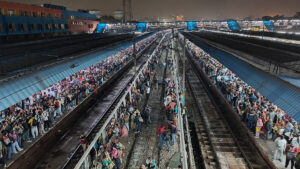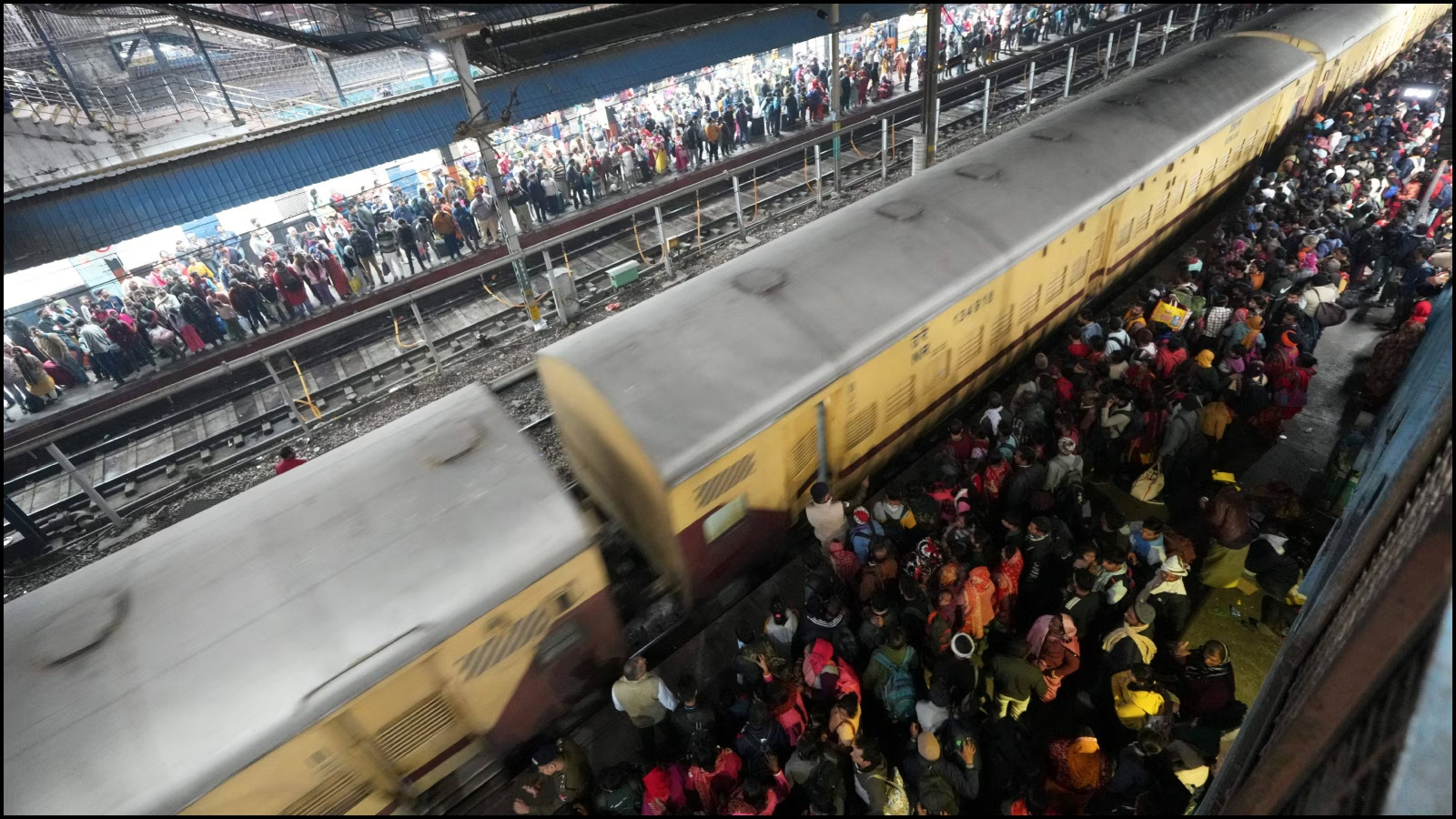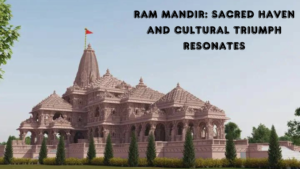New Delhi Railway Station Tragedy: Eighteen Lives Lost in Crowded Crush
The crowded New Delhi Railway Station experienced a tragic incident in New Delhi India which led to eighteen deaths during a fatal stampede. A stampede on one station platform killed eighteen people before the entire nation began discussing railway system issues regarding safety and overcrowding.
The Tragic Incident
The accident took place at a crowded time when numerous passengers occupied the station platform. Major congestion occurs at New Delhi Railway Station because thousands of passengers travel from this station to different locations throughout India. A huge crowd formed next to the platforms when numerous travelers tried to board an extremely packed train. Witness statements show that the situation worsened when additional people pushed while trying to get onto the train thus making the scenario dangerous and disorderly.
The crowd turned into an unruleable stampeding mass shortly after the beginning of the evacuation. The rush caused widespread trampling which resulted in people collapsing between train carriages and the platforms. Eighteen people lost their lives during the stampede that occurred together with the excessive crowd density on the station platforms. The stampede caused severe injuries to dozens of people who required urgent life-saving medical care. Many people were seen screaming for assistance while emergency teams and station officials attempted to gain control over the scene which left observers in a state of deep emotional distress.
The incident served as a warning for railroad safety needs.
The Railway Station disaster in New Delhi highlighted the persistent overcrowding problems Indian railway system has faced for a long time. Twenty-three million daily travelers use Indian Railways as their primary means of transportation although this national network faces safety issues and insufficient railroad infrastructure and is excessively crowded.
The high number of station visitors at New Delhi and train service shortages explain why the station remains overcrowded. Passengers face lengthy queues and busy platforms together with massive train space competition. Such conditions foster a hazardous setting that promotes both accidents and stampedes to occur.
The events of that day caused Indians to doubt whether Indian Railways possessed adequate readiness to manage crowds of that magnitude. Trains and railway services are experiencing high demand but the railway infrastructure remains behind the rapid growth of both population and train passenger numbers.
The Aftermath: Casualties and Injuries
Emergency medical personnel immediately arrived at the site while attempting first aid to help the injured survivors. Hospital medical teams transported the injured patients to local treatment facilities while some victims faced critical health problems. During the incident eighteen casualties emerged followed by numerous others sustaining serious injuries. Traumatic injuries from the crush combined with suffocation because of overcrowding became the primary factors in the deaths that occurred.

The death of eighteen individuals affected numerous families intensely yet many victims’ relatives remained without information regarding their destinies during the accident. Survivors together with people who observed the catastrophe suffered severe emotional consequences as the incident played out in front of their eyes. The relatives of victims who had suffered from the stampede gathered outside the hospital positioned there to search for information about their deceased family members.
Government Response and Investigation
Both the government and Indian Railways showed their sympathies by starting an investigation to discover the source that caused this accident. Multiple authorities hurried to start the inquiry at the site by obtaining witness statements while analyzing video footage to establish the cause of the stampede. The investigation focused on revealing whether any negligence or absent safety standards played a part in creating the disaster despite initial reports linking overcrowding and train boarding haste to the accident.
Public requests emerged for enhanced security standards along with upgraded crowd control measures at railway facilities because of this incident. Observers assess the Indian Railways’ poor management because they found overcrowding combined with inadequate crowd control systems exist as persistent issues at numerous stations including New Delhi as well as throughout the nation. The severe accident revealed a broad requirement for upgraded facilities together with secure infrastructures designed for passenger safety.
The Role of the Public and Social Media
Social media served as a key platform for spreading information about the dreadful incident after it happened. Social media platforms broadcast pictures and videos of the stampede which revealed both the catastrophic scene of the disaster and its consequences. Various visual content spread rapidly across social media platforms which made both officials and citizens see the security problems present in New Delhi Railway Station as well as other rail stations across India.
Several social media users criticized how station authorities failed to control overcrowding at the station but most of the network content focused on sympathy and feelings of mourning. People raised concerns about the emergency response capabilities in government agencies since their response time appeared insufficient for handling such an extensive crisis.
Public outrage after the event showed both shock and anger leading people to seek justice through local authorities and Indian Railways. Local activists and victim family members formed demonstrations that pressured the government to adopt quick measures to stop similar accidents from recurring.
Moving Forward: A Call for Reform
The New Delhi Railway Station stampede proved that India requires an extensive transformation of rail safety regulations in its stations. Experts demand various essential changes which include advanced crowd management protocols as well as better train scheduling and additional station platforms and facilities for the rising number of commuter traffic.
To enhance passenger movement management throughout its main stations the Indian Railways should prioritize supporting infrastructure modernization through technological implementation. Passenger safety stands as the top priority so the authorities must enforce rigorous safety protocols alongside enhanced emergency protocols and trained staff.
All survivors and relatives of casualties are grieving while the investigation process continues to demonstrate how poorly managed this world-renowned railway network operates. The authorities must advance genuine measures to guarantee this type of tragedy will never occur again. The lessons learned from this disaster need dedicated passenger safety measures and genuine reform to transform them into lasting future changes.
Also Read:- https://hindustanslive.com/news/sara-bint-mashour-al-saud-a-royal-legacy-shaped-by-advocacy/











